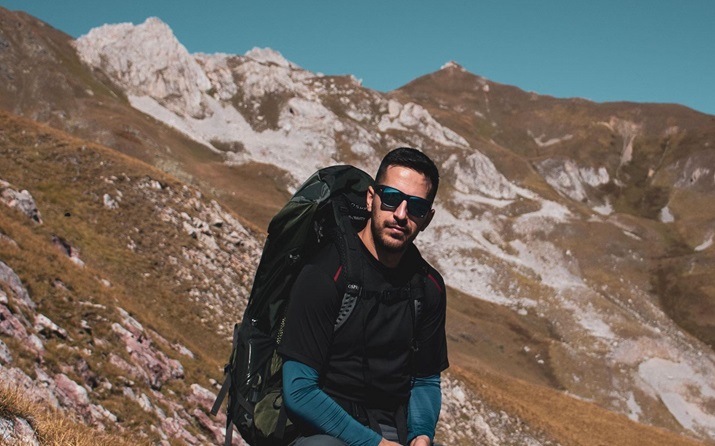From the Track to the Trail: Sunglasses That Keep Up
Whether you’re pounding the pavement, tackling uneven trails or sprinting around the track, a solid pair of sunglasses is one bit of kit you shouldn’t overlook. They’re more than just a summer accessory—they’re essential protection for your eyes and a practical piece of performance gear for runners, cyclists, hikers and athletes of all types.
Why Your Sunglasses Matter More Than You Think
If you’ve ever found yourself squinting into the sun mid-run or battling with glare bouncing off the tarmac, you’ll know how distracting—and even dangerous—it can be. It’s not just about comfort either. UV protection, visual clarity and lens technology all contribute to better performance and long-term eye health.
Modern sport-focused sunglasses are built with all this in mind. They wrap close to the face for wind and debris protection, stay put during movement, and use materials designed to survive sweaty, high-impact sessions. But different activities put different demands on your eyewear—so the trick is matching your sunglasses to your sport.
Road Running: Lightweight and Low-Distraction
For road runners, it’s all about weight and stability. You want something that stays put without pinching or bouncing, especially over long distances. Frames made from materials like Grilamid (a lightweight, flexible nylon) are a good shout—they’re feather-light but don’t compromise on durability.
Lenses matter too. Look for high-contrast or photochromic lenses that adjust to changing light, especially if you’re running through shaded paths or under bridges. Ventilation is also key. Fogging up mid-run can knock your focus and slow you down, so lens cut-outs or anti-fog coatings are well worth the investment.
Options like running-specific sunglasses tick all these boxes—designed with input from athletes who understand the pressure points.
Trail Running and Hiking: Tough, Grippy and Glare-Free
Out on the trail, things get more unpredictable. One minute it’s bright sunlight, the next it’s patchy shade through a canopy of trees. You might be dealing with dust, mud, flying insects or the occasional unexpected downpour. Trail-ready sunglasses need to be versatile.
Grip is a big one here. Opt for rubberised nose pads and temple grips that respond to sweat rather than slipping with it. Lenses should offer strong contrast and glare reduction to help you pick out roots, rocks and dips in terrain—polarised options are particularly good for this.
You’ll also want durability. Frames should be flexible enough to take a knock or be shoved in a bag, but tough enough not to snap when dropped. Some models also offer interchangeable lenses or lens clips, which can be handy if you’re heading out in all sorts of conditions.
Cycling: Peripheral Vision and Aerodynamics
When you’re moving fast, good vision and aerodynamics make a real difference. That’s why cycling sunglasses tend to have wider lenses and wraparound shapes—they keep your full field of vision clear while protecting against wind, bugs and roadside debris.
Fit is essential. With your head down and helmet on, you need frames that won’t interfere with your kit or cause discomfort over long rides. Look for adjustable arms and nose pieces to get that custom fit. If you’re cycling in variable weather, photochromic lenses are again a great call.
Cyclists should also consider lens tint. Some tints enhance contrast and depth perception—ideal when you’re navigating busy roads or winding country lanes. And if you ride near water or through glare-prone areas, polarised lenses can make things a lot easier on the eyes.
Sports That Change Direction Fast
If you’re into sports like tennis, cricket or even football, where tracking a ball at speed is crucial, sunglasses need to be incredibly secure and responsive. You want a snug fit, obviously, but also lenses that react quickly to shifting light conditions. Ball games often take place in open, sunny spaces with minimal shade—so it’s worth choosing lenses with a tint that boosts contrast and sharpness without dulling colours.
Some athletes also prefer photochromic or transition-style lenses, especially if playing in the evening or under floodlights. And frames should be impact-resistant—because let’s face it, you never know when the ball might come your way.
There are sports sunglasses made with fast-paced, multi-directional movement in mind, offering clarity, comfort and flexibility all at once.
Final Thoughts
A good pair of sports sunglasses can give you an edge—whether that’s through improved focus, sharper vision, or simply not having to worry about your eyewear slipping down your nose halfway through a 10K. The key is choosing the right specs for the right environment.
Don’t settle for a single pair to do it all if you regularly switch between road, trail and sport. Think of them as part of your performance gear, like your shoes or your hydration strategy. Invest in what works for your activity, your face shape, and the conditions you train in most often.


Comments are closed.